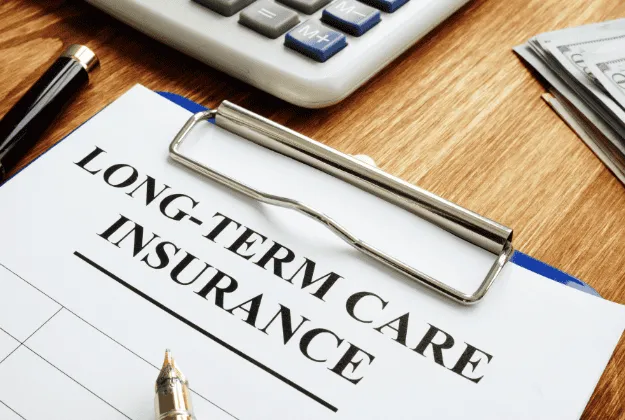Frequently Asked Questions
Got questions? We’ve got answers.
We’re here to make health coverage simple, affordable, and easy to understand. Below are some common questions people ask when getting started.
Health Coverage FAQs

Why should I have health insurance even if I’m healthy?
Even if you’re in great health, having health insurance is essential because it safeguards you against unexpected medical expenses. Accidents, sudden illnesses, or emergency procedures can cost thousands of dollars if you’re uninsured. Health insurance provides a financial safety net that protects your savings.
More than that, it gives you access to preventive services like annual checkups, vaccines, and early screenings that help detect and manage conditions before they become serious, ensuring long-term health and peace of mind.

What’s the difference between HMO, PPO, and EPO health plans?
Health insurance plans vary in flexibility and cost.
• HMO (Health Maintenance Organization): Requires you to use in-network providers and get referrals to see specialists. It’s cost-effective but more restrictive.
• PPO (Preferred Provider Organization): Offers greater freedom to see both in- and out-of-network doctors without referrals but comes with higher premiums and out-of-pocket costs.
• EPO (Exclusive Provider Organization): Falls between HMO and PPO. It generally costs less than a PPO and doesn’t require referrals, but it only covers in-network care (except emergencies).
Choosing the right one depends on how much flexibility you want in choosing doctors and how much you're willing to spend.

How can I find an affordable health plan that fits my needs?
Finding a health insurance plan that balances coverage and affordability depends on your income, location, and specific health needs. If you qualify, government subsidies through the Health Insurance Marketplace can significantly reduce your monthly premiums and out-of-pocket costs.
If you're self-employed, between jobs, or not covered by an employer, private insurance options and short-term plans may be worth exploring. Speaking with a licensed health insurance agent or broker can help you compare plans and choose one that suits both your budget and lifestyle.

Can you get health insurance with a pre-existing condition?
Yes, you can absolutely get health insurance even if you have a pre-existing condition. Thanks to the Affordable Care Act (ACA), health insurance companies are legally required to offer coverage regardless of your medical history. This means conditions like diabetes, asthma, cancer, or high blood pressure cannot disqualify you from enrolling, nor can insurers charge you more because of them.
All ACA-compliant plans must include benefits that help manage these conditions, including prescriptions, doctor visits, and specialist care. Whether you apply through the Health Insurance Marketplace or a private insurer, you have the right to comprehensive, non-discriminatory coverage.

What does a typical health coverage plan include?
Most comprehensive health insurance plans cover a wide range of services. These usually include doctor visits, hospital stays, emergency services, prescription drugs, mental health support, lab testing, and preventive care.Depending on the plan, additional benefits might include telehealth services, urgent care access, specialist referrals, and maternity care.
Some plans allow you to choose your own healthcare providers, while others may work within a network. Always review the plan's summary of benefits to understand exactly what’s included.
Life Coverage FAQs

How does life insurance work and why do you need it?
Life insurance is a financial agreement between an individual and an insurance provider, created to offer monetary protection to your loved ones after you pass away. In return for paying regular premiums, the insurance company promises to pay a tax-free lump sum, known as a death benefit to your designated beneficiaries. This payment can be used in a variety of ways, including covering funeral and burial expenses, paying off debts like a mortgage or credit cards, replacing lost income, or funding long-term goals such as a child’s college education or your spouse’s retirement.
What makes life insurance so important is that it serves as a financial safety net for those who depend on you. Life insurance helps your loved ones stay financially stable if you're no longer there to support them. It can make sure they can keep up with everyday bills, stay in their home, and continue living the life you’ve worked hard to provide without added financial stress during an already difficult time.
Whether you’re the primary earner, a stay-at-home parent, or a business owner, life insurance gives you the peace of mind that comes from knowing your responsibilities won’t become someone else’s burden. It’s a simple yet powerful way to protect your family’s financial future and honor the commitments you’ve made to them.

What’s the difference between Term Life Insurance & Whole Life Insurance?
Term life insurance is a simple and affordable way to protect your loved ones for a set period, typically 10, 20, or 30 years. It’s often chosen by people who want to make sure their family is financially secure during specific life stages, such as raising children, paying off a mortgage, or supporting a spouse.
If you pass away during the term, the policy pays a guaranteed death benefit to your beneficiaries, helping them cover everyday expenses, debts, or future plans. Because it’s cost-effective, term life is ideal for families who want solid protection without a high monthly premium.
Whole life insurance, in contrast, offers permanent coverage that lasts your entire life, as long as premiums are paid. What sets it apart is its cash value component, which acts like a built-in savings account. This cash value grows over time and can be borrowed against or used later in life for things like emergencies, retirement planning, or supplemental income. While whole life insurance tends to have higher premiums, it combines lifelong protection with long-term financial benefits, making it a valuable part of a broader financial strategy.
Both options offer peace of mind, but serve different goals.
• Term life provides practical, budget-friendly coverage designed to protect your family during your most financially demanding years.
• Whole life is ideal if you’re looking for permanent coverage and a way to build financial value you can use in the future.
Choosing the right one depends on your personal needs, financial goals, and how long you want your coverage to last.

Can you get Life Insurance without taking a medical exam?
If you're wondering how to get life insurance without a medical exam, you're not alone, and the good news is, it's entirely possible. More people are choosing no-exam life insurance, thanks to its growing availability and hassle-free application process. Instead of undergoing a physical, applicants answer a series of health-related questions.
These policies are typically issued faster, sometimes in just a few days, and may be ideal for those with health concerns or those who need coverage quickly. While coverage amounts may be lower and premiums slightly higher, they still offer a convenient and accessible way to get protected.

Who really needs Life Insurance Coverage?
If you’re wondering who should buy life insurance, the answer is anyone with financial dependents or future financial obligations. This includes parents, married couples, homeowners, and even business owners. If someone relies on your income, life insurance helps replace that lost support in the event of your death.
It’s also useful for covering personal debt, estate taxes, or business succession plans. Even young, healthy individuals can benefit from securing a policy early, when premiums are at their lowest. Life insurance is less about preparing for the end and more about preserving the future you've planned for your family.

How much Life Insurance do you really need?
A common question is how much life insurance do I need, and the answer depends on your personal financial situation. Many experts recommend having life insurance coverage equal to 10 to 15 times your annual income to cover long-term needs like living expenses, debts, and future goals.
However, you should also factor in your debts, mortgage, family’s lifestyle, and long-term goals like your children’s education or your spouse’s retirement needs. Some people use life insurance calculators to estimate the right amount, while others speak with a licensed advisor to create a tailored plan. The goal is to make sure your loved ones can maintain financial stability no matter what happens.
Medicare Coverage FAQs

What is Medicare and who is eligible?
Medicare is a health insurance program from the federal government that helps cover medical expenses for people 65 and older. It’s also available to younger individuals who have disabilities or certain serious health conditions like kidney failure requiring dialysis or a transplant.
Medicare has different parts that each handle a specific area of care:
• Part A pays for hospital stays, rehab in a skilled nursing facility, and some home health services if you need care after leaving the hospital.
• Part B helps with doctor visits, outpatient services, preventive care like screenings and flu shots, and medical tools like canes or oxygen tanks.
• Part D covers many prescription drugs, from everyday medications to long-term treatments. You can get it on its own or through a Medicare Advantage plan.
Medicare is designed to help reduce the financial burden of health care and provide reliable coverage as you grow older or live with certain health challenges.

Can I change my Medicare plan later?
Yes, changes to your Medicare plan are allowed, but only during specific enrollment periods. The Annual Enrollment Period (AEP) runs from October 15 to December 7 each year and allows you to switch between Medicare Advantage and Original Medicare, update your prescription drug plan, or change Advantage plans.
In certain cases, you may also qualify for a Special Enrollment Period (SEP), for example, if you move to a new location, lose other health coverage, or gain eligibility for Medicaid. These special periods help ensure your coverage can adapt to life changes.It’s important to evaluate your plan each year to make sure your current doctors, prescriptions, and services are still covered and affordable.

Is dental or vision covered under Medicare?
Original Medicare does not cover routine dental care (such as cleanings, fillings, or dentures) or vision services (like eye exams, glasses, or contact lenses). However, it may cover limited services related to a medical condition, such as eye exams for diabetes or dental work required before certain surgeries.
If you’re looking for broader dental or vision coverage, Medicare Advantage plans often include these benefits as part of their all-in-one package. These added services vary by plan, so it's important to compare options to find one that meets your specific needs.

Are prescription drugs included in Medicare?
Prescription drug coverage is not automatically included with Original Medicare (Parts A and B). To receive coverage for medications, you need to enroll in a standalone Part D prescription drug plan or choose a Medicare Advantage plan that includes Part D coverage.
Part D plans vary by provider and region but generally help cover the cost of both brand-name and generic drugs. They come with a formulary, a list of covered medications, so it’s important to review the plan each year to make sure your prescriptions are still covered.

Medicare Advantage vs. Medigap: What’s the difference and which one should you choose?
Medicare Advantage and Medigap are two very different ways to enhance your Medicare coverage, and choosing the right one depends on your needs, budget, and healthcare preferences. Medicare Advantage (Part C) is an all-in-one plan offered by private insurance companies that combines Medicare Parts A and B, often with added benefits like dental, vision, hearing, and prescription drug coverage. These plans usually have lower monthly premiums but may come with network restrictions and out-of-pocket costs when you receive care.
Medigap (Medicare Supplement Insurance) works alongside Original Medicare to help pay for out-of-pocket expenses like copayments, coinsurance, and deductibles. These plans don’t include extra benefits like dental or drug coverage, but they offer more freedom to see any doctor who accepts Medicare and may result in fewer unexpected costs. If you want predictable out-of-pocket costs and freedom to choose providers, Medigap may be the better fit. If you prefer bundled benefits and potentially lower premiums, Medicare Advantage could be right for you.
Long-term Care FAQs

What is long-term care insurance?
Long-term care insurance is a type of coverage that helps pay for personal care services when you’re no longer able to manage everyday tasks on your own due to age, illness, or a disability. These tasks, like bathing, eating, dressing, and getting around are called activities of daily living (ADLs).
Unlike regular health insurance or Medicare, which typically cover short-term or medical-related care, long-term care insurance is designed to support extended, non-medical assistance. It can help cover services provided at home, in assisted living communities, nursing homes, or specialized memory care facilities for those with conditions like Alzheimer’s or dementia.

Why would I need long-term care insurance?
Many people assume Medicare or regular health insurance will cover long-term care needs, but in reality, they don’t cover ongoing support with daily living tasks. If you ever require help with things like bathing, meal preparation, or supervision due to cognitive decline, the costs can add up quickly, and may need to be paid out-of-pocket.
Long-term care insurance can help protect your savings, reduce financial stress on your family, and give you more control over the type and quality of care you receive. It offers peace of mind knowing that if long-term care becomes necessary, you won’t have to deplete your assets or rely solely on family members for support.

Will my policy pay benefits right away?
Most long-term care insurance policies include an "elimination period," which is the amount of time you must wait before benefits begin after you start needing care. This is similar to a deductible but measured in days rather than dollars, commonly 30, 60, or 90 days.
During this waiting period, you’ll need to pay for care out of pocket. Policies also have daily or monthly benefit limits, which cap how much the plan will pay for services. Understanding these details including the elimination period, benefit maximums, and any exclusions is essential to avoid surprises when it’s time to use your coverage.

When is the best time to get long-term care insurance?
Most experts recommend purchasing long-term care insurance between the ages of 50 and 65, when you're still likely to be healthy and eligible for lower rates. Applying early not only increases your chances of approval but also allows you to build a plan that fits your needs before age or illness limits your options.
Delaying can result in higher premiums, or worse, being turned down for coverage altogether. Getting insured ahead of time is a proactive way to protect your independence and your savings as you age.

What does long-term care insurance typically cover?
Long-term care insurance policies usually cover a wide range of services that support individuals with chronic conditions or disabilities. This includes in-home care such as skilled nursing, personal aides, housekeeping, and hygiene support. It also helps pay for stays in assisted living communities, nursing homes, and memory care facilities. Many plans also cover adult day care and respite care, which gives family caregivers a break.
Some policies include additional benefits like care coordination services, which help you find and manage care providers, and inflation protection to ensure your benefits keep pace with rising care costs over time. Coverage details can vary, so it’s important to read your policy carefully and ask questions before enrolling.
Final Expense FAQs

What is final expense insurance?
Final expense insurance is a type of life insurance designed to cover the costs that arise at the end of life, most commonly funeral and burial expenses, but also medical bills, unpaid debts, and legal fees. Sometimes referred to as burial insurance or funeral insurance, it provides a smaller death benefit than traditional life insurance, usually between $5,000 and $25,000.
These policies are easy to apply for and often don’t require a medical exam, making them a popular choice for seniors and those with health concerns. The goal is simple: to ease the financial burden on your loved ones so they can focus on honoring your memory, not worrying about the costs.

Does final expense insurance require a medical exam?
Yes, however, you can get final expense insurance without a medical exam, and it’s one of the reasons this type of coverage is so popular, especially among seniors. Most final expense policies are designed to be simple and accessible, offering an easier approval process than traditional life insurance.
There are two common types of no-exam policies:
• Simplified issue plans ask just a few health-related questions, with no physical exam required.
• Guaranteed issue plans ask no medical questions at all and accept almost everyone within the eligible age range, usually between 50 and 85.
These options make it possible to get coverage even if you have existing health conditions or have been declined for other policies. While guaranteed issue policies may have a graded death benefit during the first few years, they still provide long-term peace of mind.
Final expense insurance without a medical exam is a practical and stress-free way to make sure your loved ones aren’t left with the financial burden of funeral costs, medical bills, or other final expenses.

Who should consider final expense insurance?
Final expense insurance is ideal for seniors, individuals without a dedicated savings plan for end-of-life costs, or those who may not qualify for traditional life insurance. It’s especially helpful for people who want to ensure their family won’t face financial hardship while making final arrangements.
If you don’t need a large life insurance policy but still want to leave something behind to help with funeral costs and other expenses, final expense insurance offers a simple and affordable solution. It’s also a good fit for those who want to leave a small, tax-free legacy to a loved one.

How much coverage can I get with a final expense policy?
Final expense policies typically offer coverage ranging from $5,000 to $25,000, though some insurers may go higher. This amount is intended to help cover immediate expenses after a person passes, such as a funeral service, cremation or burial, outstanding medical bills, or even small debts.
The specific amount you can qualify for depends on factors like your age, health, and the insurance company’s guidelines. Because of its targeted purpose and lower coverage amount, final expense insurance is usually more affordable and easier to obtain than larger life insurance policies.

Can my family use the money for other things besides a funeral?
Yes, your family can use the payout from a final expense policy however they choose. While most people purchase this insurance to cover funeral or cremation costs, the benefit is not limited to those purposes. It can also help with unpaid medical bills, travel expenses for out-of-town family members, credit card debt, or day-to-day living costs during a difficult time.
The death benefit is paid directly to your chosen beneficiary, giving them the flexibility and freedom to use the funds where they’re needed most.
STILL NOT SURE?
General FAQs on low-cost plans
How do I choose the right insurance plan for me?
Choosing the right insurance plan starts with understanding your healthcare needs and financial situation. First, think about how often you visit doctors, what prescriptions you take, and whether you have ongoing medical conditions that require regular care.
Then, compare plans by looking at key factors such as premiums (your monthly payment), deductibles (what you pay before insurance kicks in), and out-of-pocket maximums (the most you’ll spend in a year). It’s also important to check the provider network to make sure your preferred doctors and hospitals are covered.
If you take medications regularly, be sure to review the plan’s drug list (formulary) to ensure your prescriptions are included. A good plan balances coverage and cost—and fits your unique needs, not just your budget.
What is a deductible in health insurance?
A deductible is the amount of money you pay out of pocket for covered healthcare services before your insurance starts to pay. For example, if your plan has a $1,000 deductible, you’ll need to cover the first $1,000 of eligible medical expenses yourself. Once you’ve met your deductible, your insurance typically starts covering a portion of your costs, such as paying 80% while you pay 20% (this is called coinsurance).
Some services like preventive care or annual checkups may be covered even before you meet your deductible. Understanding your deductible is important because it affects how much you’ll actually spend when you use your insurance.
Can I have multiple insurance plans?
Yes, having multiple health insurance plans is allowed and is commonly referred to as dual coverage or coordination of benefits. This setup might occur when you're enrolled in a plan through your employer but are also covered under a spouse’s or parent’s policy. In this case, your primary insurance pays first, and your secondary insurance may cover remaining eligible expenses, helping reduce or eliminate out-of-pocket costs.
However, not all services may be fully covered, and the way plans coordinate can vary. To avoid claim complications or delays, make sure to inform both insurers about your dual coverage status and keep your information updated.
What happens if I miss an insurance payment?
Missing an insurance payment can lead to a lapse in coverage, but most insurers offer a grace period—usually 30 days—during which you can still make your payment and keep your policy active. If you fail to pay by the end of the grace period, your policy may be canceled, and any claims during that unpaid time might not be covered.
For health insurance plans purchased through the Marketplace, the grace period may be up to 90 days if you’ve received a subsidy. To avoid losing coverage, it’s important to pay premiums on time or contact your insurer immediately if you're having trouble making a payment—they may offer payment plans or other support.
How does health insurance help with prescriptions?
Health insurance helps reduce the cost of prescription medications by covering part of the expense through a formulary, which is a list of approved drugs. Most plans group medications into pricing tiers—with generic drugs typically being the most affordable, and brand-name or specialty drugs costing more.
When you fill your prescriptions at an in-network pharmacy, your insurance covers a portion of the cost, and you usually pay a copay or coinsurance. Choosing a plan with strong prescription coverage is especially important if you take medications regularly, as it can lead to significant long-term savings.
Can I use health insurance when traveling?
Yes, you can often use your health insurance when traveling, but the level of coverage depends on the type of plan you have and where you're going. If you're traveling within the United States, most plans offer emergency coverage even if you're outside your provider network, though routine care may be limited or subject to higher out-of-pocket costs.
For international travel, most U.S. health insurance plans do not provide coverage outside the country unless you have a special policy or added travel insurance. It’s a good idea to check with your insurance provider before your trip to understand what’s covered, especially for emergency care, hospital visits, or prescriptions abroad. Travel health insurance or international medical coverage may be a smart option if you're planning to leave the country for an extended time.
Are mental health services covered by insurance?
Yes, most health insurance plans today include coverage for mental health care. This typically includes therapy sessions, counseling, psychiatric visits, and medications for mental health conditions such as anxiety, depression, or bipolar disorder. Thanks to federal laws like the Mental Health Parity and Addiction Equity Act, insurers must offer mental health benefits on par with physical health coverage.
Many plans also cover treatment for substance use disorders and provide access to virtual therapy. However, coverage details—like provider availability, session limits, and out-of-pocket costs—can vary from one plan to another. To make sure you get the support you need, it’s important to check if your preferred therapists or services are included in your plan’s network.
What is an out-of-pocket maximum?
The out-of-pocket maximum is the highest amount you’ll have to pay in a year for healthcare services your plan covers. After you reach this limit through a combination of deductible, copayment, and coinsurance payments, your insurance takes over and pays all additional covered costs in full for the rest of the year.
This feature is designed to protect you from excessive medical expenses and is especially valuable during high-cost treatments or long-term care. Be aware that premiums and out-of-network or uncovered services do not count toward this limit.
Can I cancel my insurance anytime?
You can cancel your health insurance at any time, but the timing can affect your coverage and future eligibility. If you have a plan through the Health Insurance Marketplace, you can cancel at any time, but losing coverage may not qualify you for a new plan until the next Open Enrollment Period—unless you experience a qualifying life event (like losing a job, getting married, or moving).
If you have employer-sponsored insurance, check with your HR department as cancellation rules and timing can vary. Before canceling, it’s important to make sure you have other coverage lined up to avoid a gap, especially since going uninsured can result in large out-of-pocket medical costs.
Do I qualify for subsidies or discounts?
You may qualify for subsidies—also called premium tax credits—if you buy health insurance through the Health Insurance Marketplace and meet certain income requirements. These discounts are designed to make coverage more affordable and can significantly lower your monthly premiums.
Depending on your household income and size, you might also be eligible for cost-sharing reductions, which help reduce deductibles, copays, and other out-of-pocket expenses. Even if you think you earn too much, it’s worth checking, as income limits vary by location and are updated yearly. Applying through the Marketplace will automatically determine whether you’re eligible for any financial help.

Your trusted partner for life’s health decisions
Chat with us
Live chat is currently unavailable.
Please check back soon or give us a call for immediate assistance.
Call us
Call 1-818-481-9342 / TTY 711
Hours: 8 a.m. to 8 p.m., 7 days a week.

FOLLOW US
COMPANY
CUSTOMER CARE
LEGAL
Copyright 2025. Low Cost Health Coverage. All Rights Reserved.










